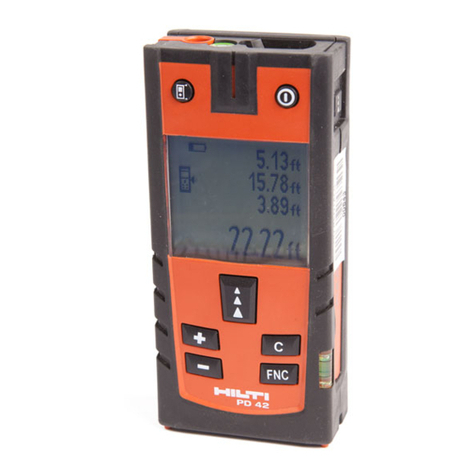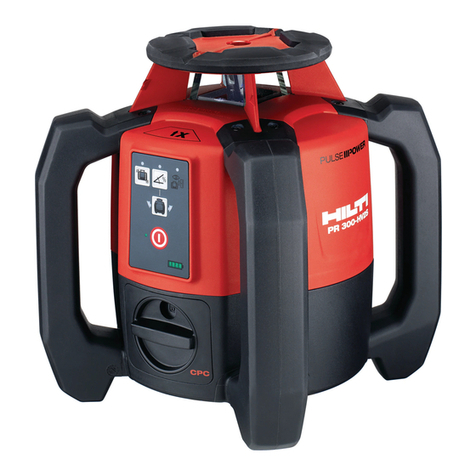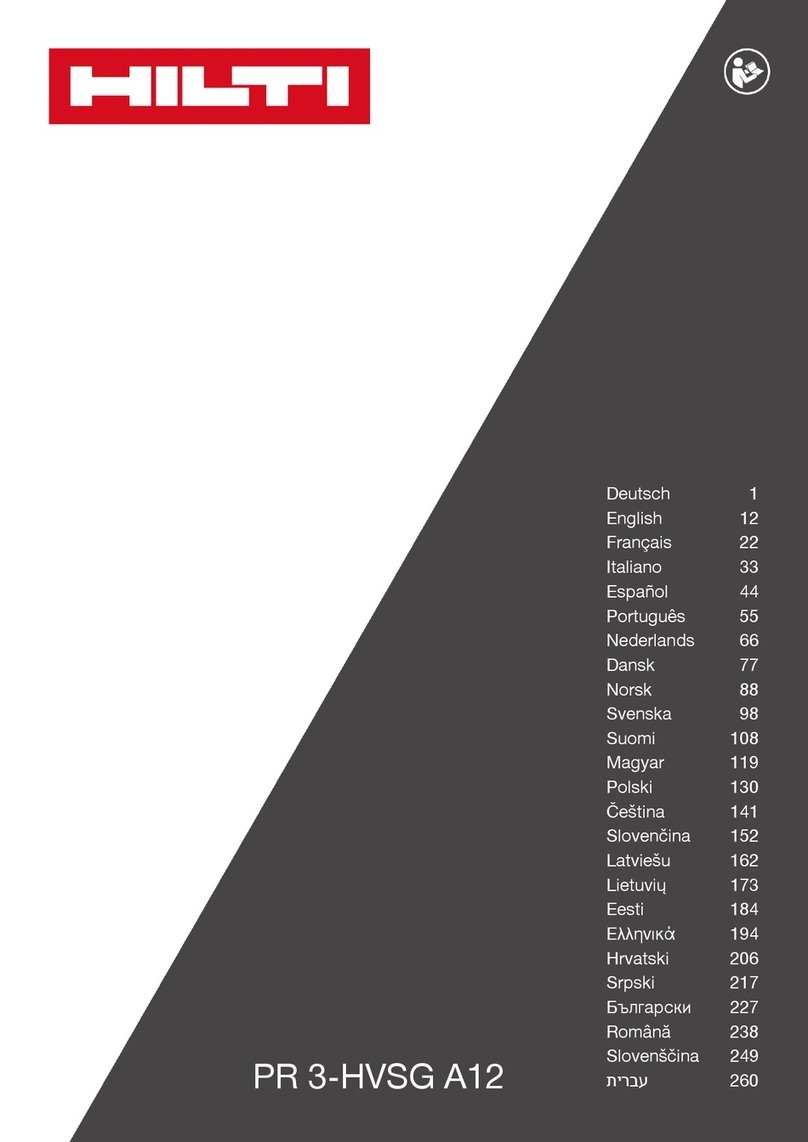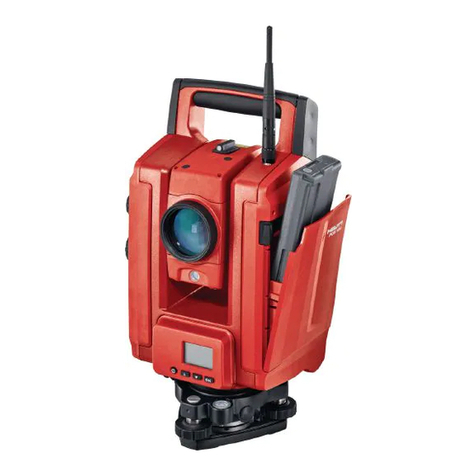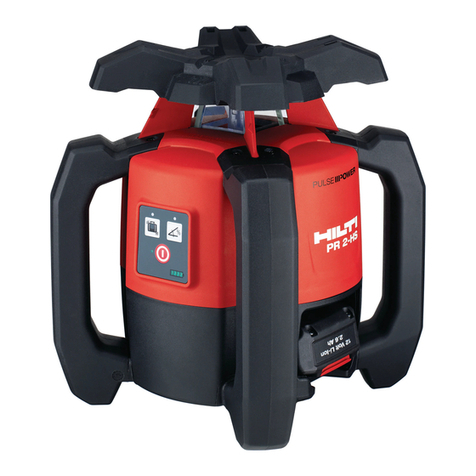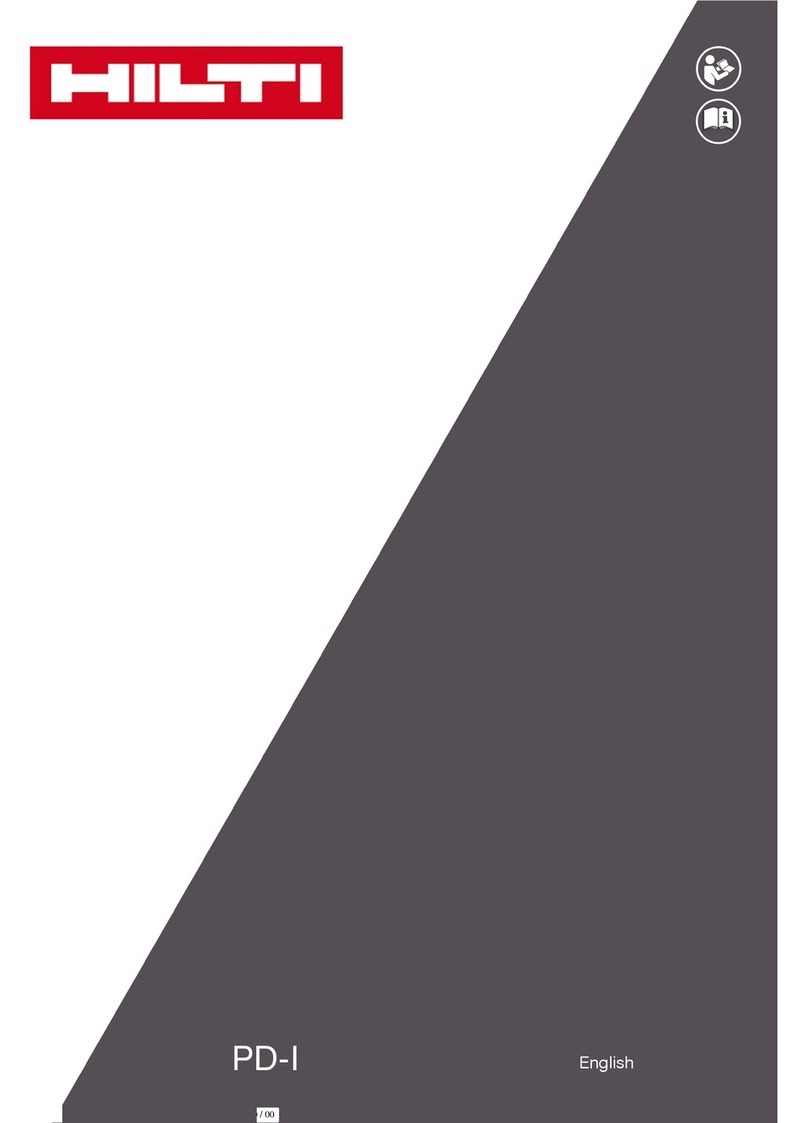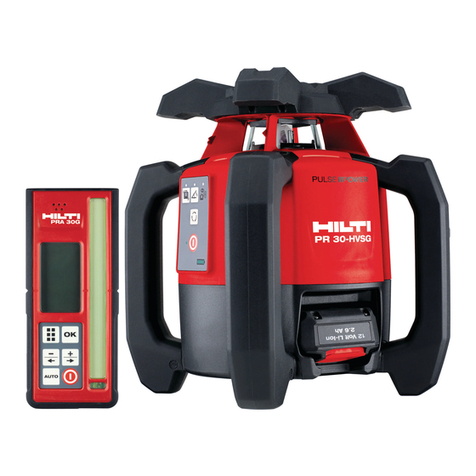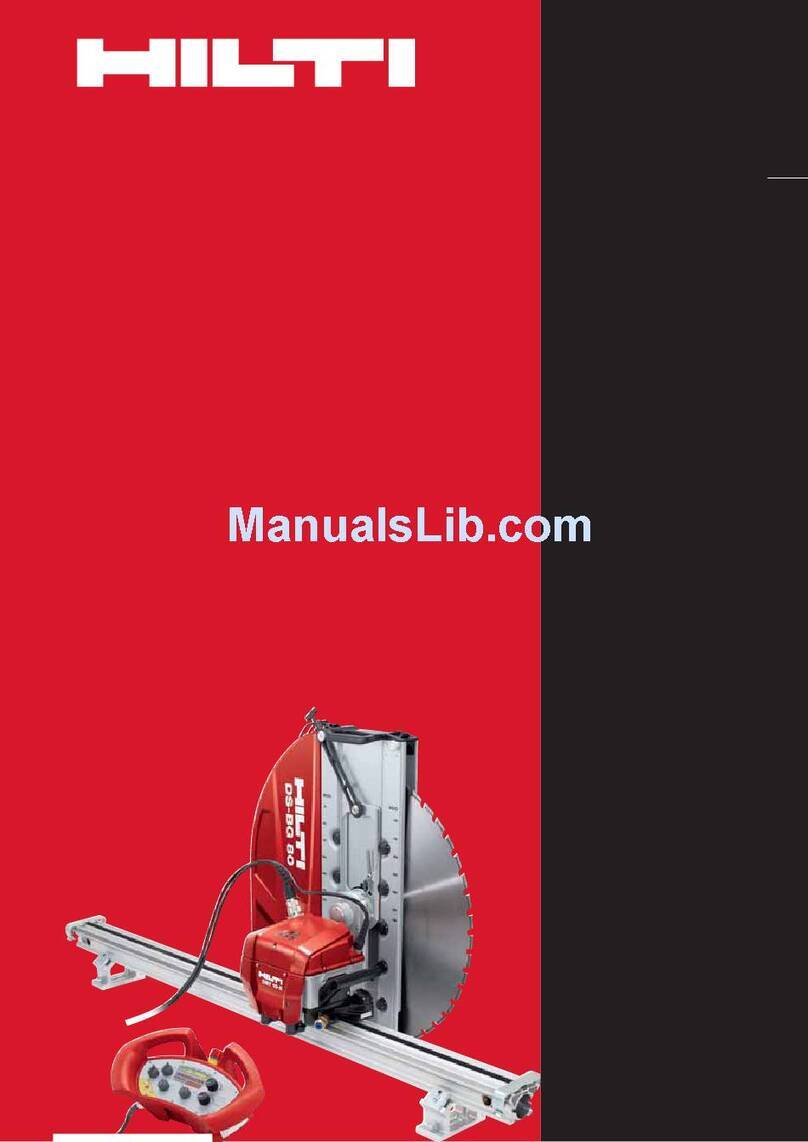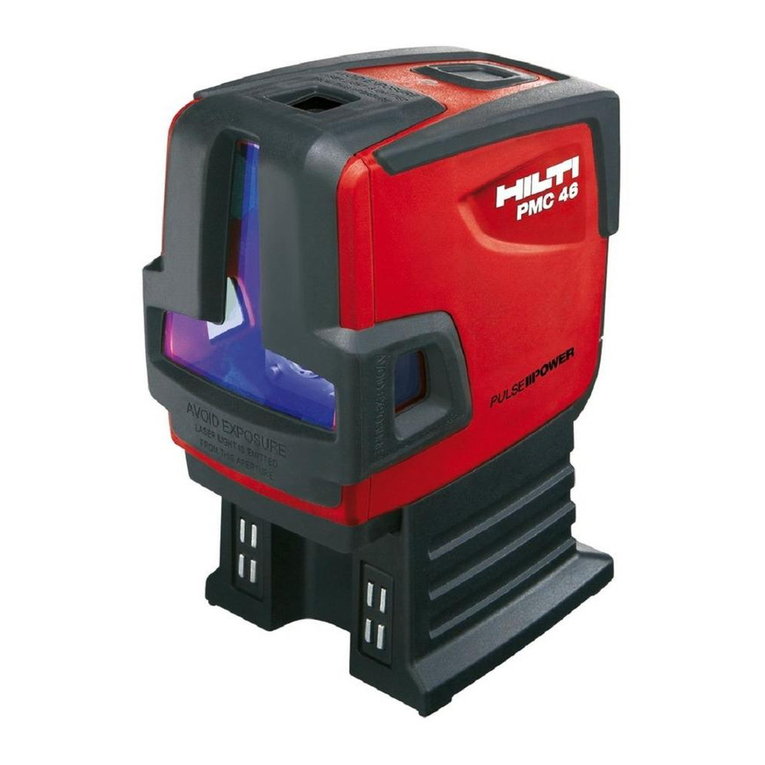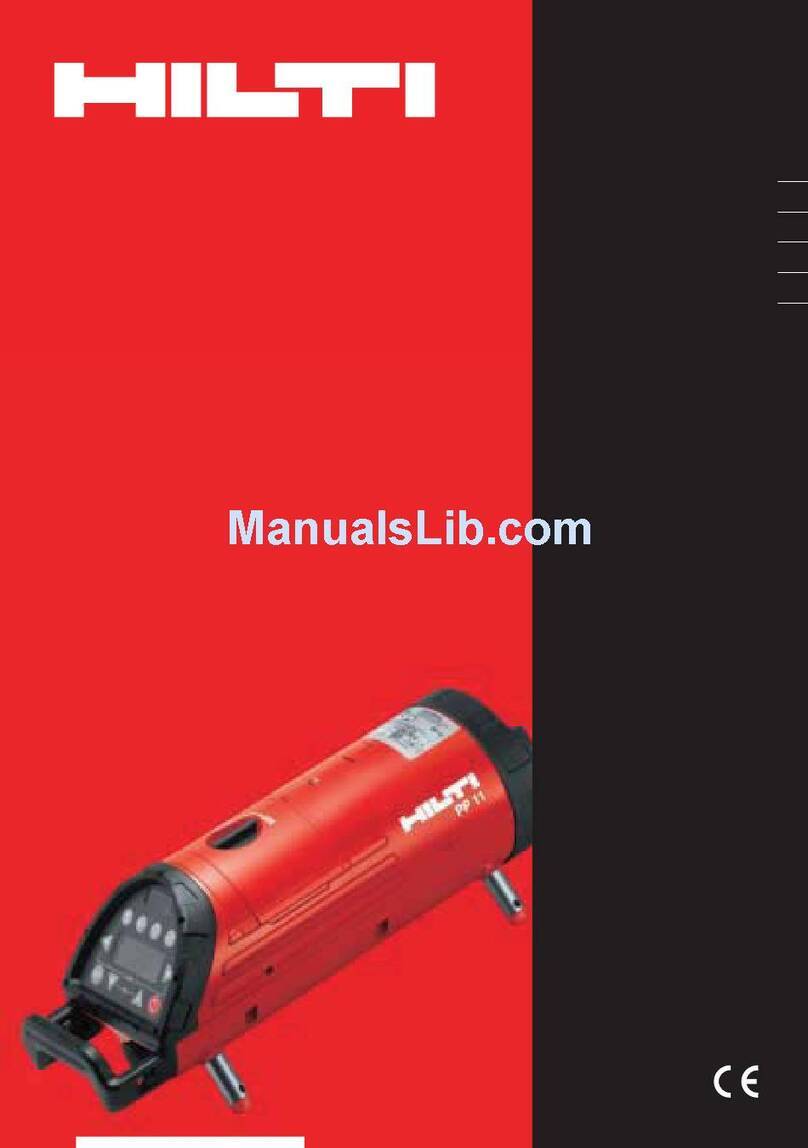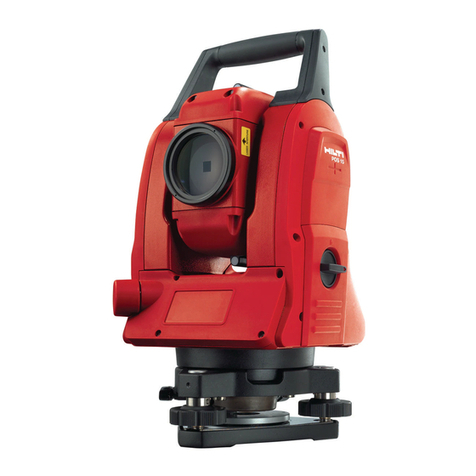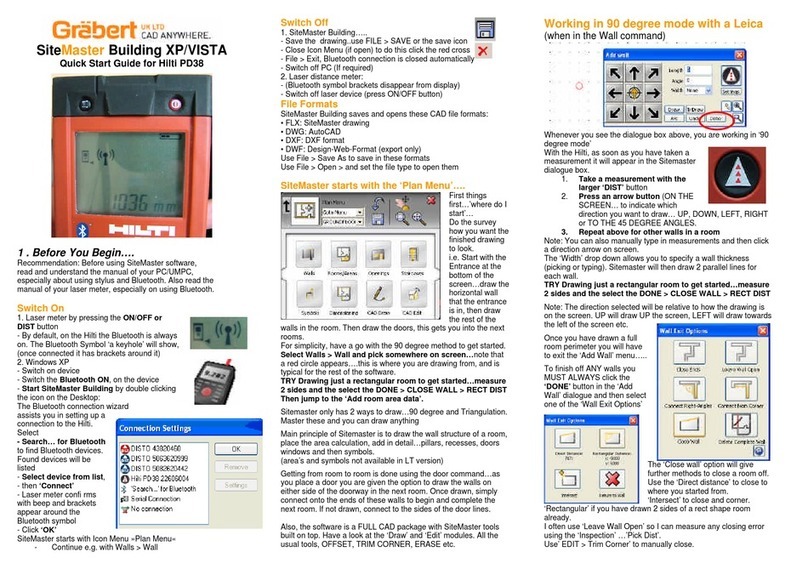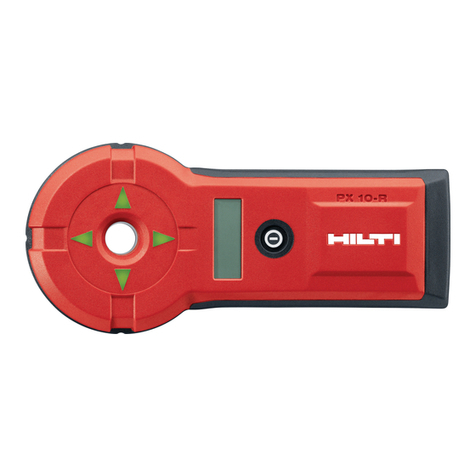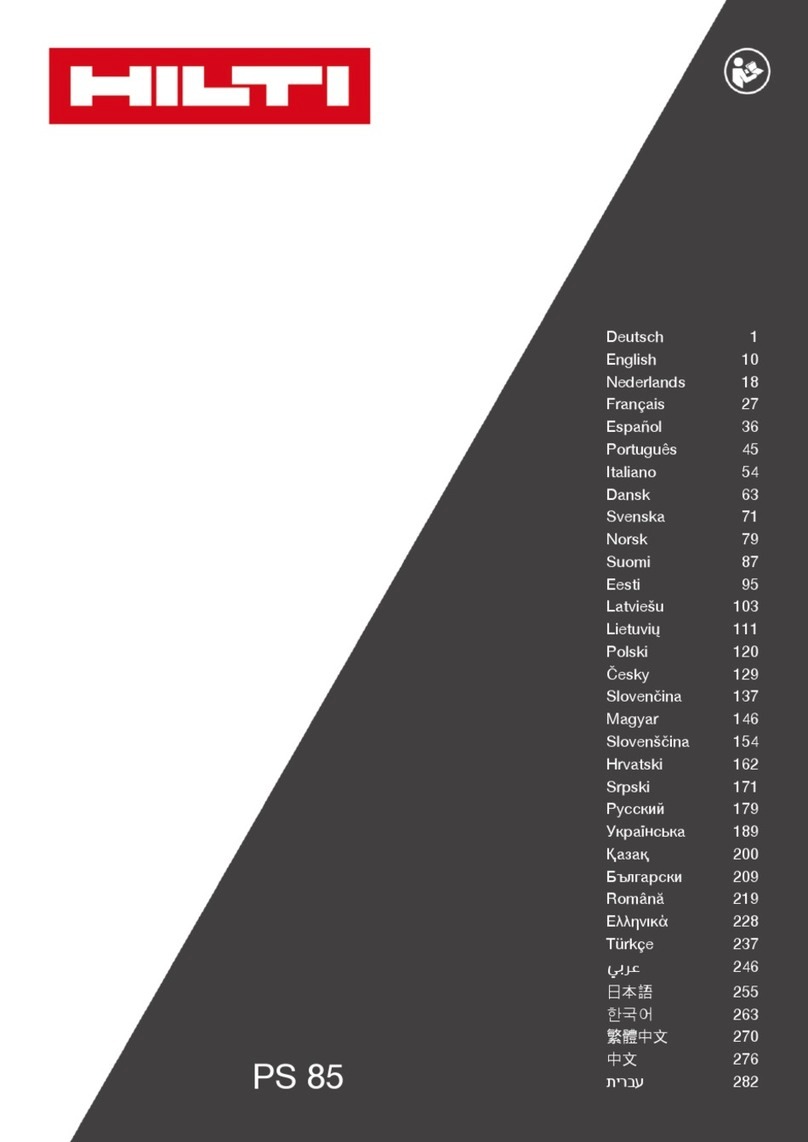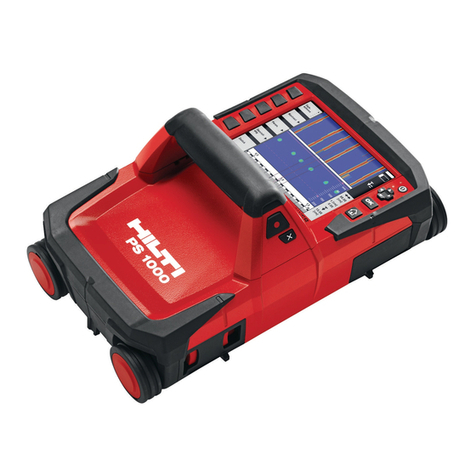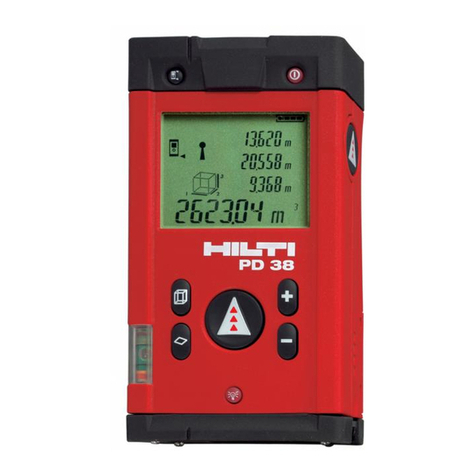
q) Do not use the tool as a level.
r) Check the tool before taking important measure-
ments or after it has been dropped or subjected to
mechanical effects such as impact or vibration.
4.3 Proper organization of the work area
a) Secure the area in which you are working and take
care to avoid directing the beam toward other per-
sons or toward yourself when setting up the tool.
b) Use the tool only within the defined application limits,
i.e. do not take readings from mirrors, stainless steel
or polished stone, etc.
c) Observe the accident prevention regulations applic-
able in your country.
4.4 Electrical safety
a) Check the condition of the extension cord and
replace it if damage is found. Do not touch the AC
adapter if the extension cord or AC adapter are
damaged while working. Disconnect the supply
cord plug from the power outlet. Damaged supply
cords or extension cords present a risk of electric
shock.
b) Do not touch the supply cord or extension cord if
damaged while working. Disconnect the supply cord
plug from the power outlet. Damaged supply cords
or extension cords present a risk of electric shock.
4.5 Electromagnetic compatibility
Although the tool complies with the strict requirements
of the applicable directives, Hilti cannot entirely rule out
the possibility of the tool
- causing interference to other tools (e.g. aircraft navig-
ation equipment) or being subject to
- interference caused by powerful electromagnetic radi-
ation, leading to incorrect operation.
Check the accuracy of the tool by taking measurements
by other means when working under such conditions or
if you are unsure.
4.5.1 Laser classification for Laser Class 2
products
The laser plummet of the tool complies with Laser Class
2 based on the IEC/EN 60825-1:2007 standard and Class
IIbasedonCFR21§1040(LaserNotice50).Intheevent
of direct eye contact with the laser beam, close your eyes
and move your head out of the path of the beam. Do not
look directly into the light source. Do not direct the laser
beam toward persons.
4.5.2 Laser classification for Laser Class 3R
products
a) This tool complies with Laser Class 3R in accordance
with IEC60825-1 / EN60825-1:2007 and Class IIIa in
accordance with CFR 21 § 1040 (Laser Notice 50). In
the event of direct eye contact with the laser beam,
close your eyes and move your head out of the path
of the beam. Do not look directly into the light source.
Do not direct the laser beam toward persons.
b) Tools of the laser class 3R and class IIIa should be
operated by trained personnel only.
c) Theareainwhichthetoolisinusemustbemarked
with laser warning signs.
d) Precautions must be taken to ensure that the laser
beam does not unintentionally strike highly reflective
surfaces.
e) Precautions must be taken to ensure that persons do
not stare directly into the beam.
f) The laser beam must not be allowed to project bey-
ond the controlled area.
g) When not in use, laser tools should be stored in an
area to which unauthorized persons have no access.
4.6 Careful use of battery-powered tools
a) Do not expose batteries to high temperatures and
keep them away from fire. This presents a risk of
explosion.
b) Under abusive conditions, liquid may leak from the
battery. Avoid contact. If contact accidentally oc-
curs, flush with water. In the event of the liquid
coming into contact with the eyes, rinse the eyes
with plenty of water and consult a doctor. Liquid
ejected from the battery may cause irritation or burns.
c) Do not disassemble, squash or incinerate batter-
ies and do not subject them to temperatures over
75°C. This presents a risk of fire, explosion or injury
through contact with caustic substances.
d) Do not charge or continue to use damaged bat-
teries (e.g. batteries with cracks, broken parts,
bent or pushed-in and/or pulled-out contacts).
e) Paper clips, coins, keys, nails, screws and other
small metal objects that could short-circuit the
electrical contacts must be kept away from bat-
teries that are not in use and away from battery
chargers. Short-circuiting the contacts on a battery
or charger may cause burning injuries or start a fire.
f) Use only the battery chargers recommended by
the manufacturer to charge the batteries. Use of a
charger with batteries other than the specific type(s)
for which it is designed presents a risk of fire.
g) Use only batteries of the type approved for use
with the applicable tool. Use of other batteries or
use of the batteries for purposes for which they are
not intended presents a risk of fire and explosion.
4.7 General safety rules
a) Before taking measurements, the user must make
sure that the instruments and equipment used
meet the requirements of the task.
b) Do not operate the tool in explosive atmospheres,
such as in the presence of flammable liquids,
gases or dust. tools and appliances create sparks
which may ignite the dust or fumes.
c) Stay alert, watch what you are doing and use com-
mon sense when operating the machine. Don’t
use the machine when you are tired or under the
influence of drugs, alcohol or medication. Amo-
ment of inattention while operating machines may
result in serious personal injury.
en
17
Printed: 26.09.2014 | Doc-Nr: PUB / 5199516 / 000 / 00
